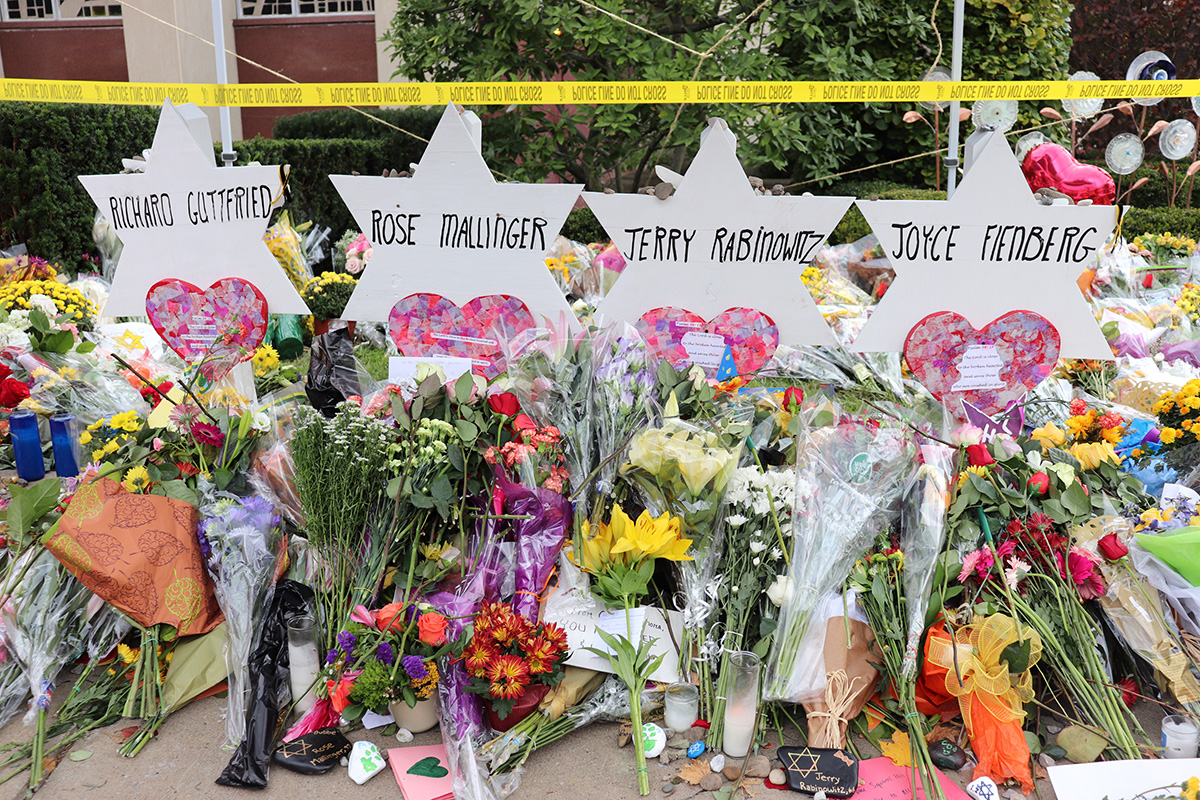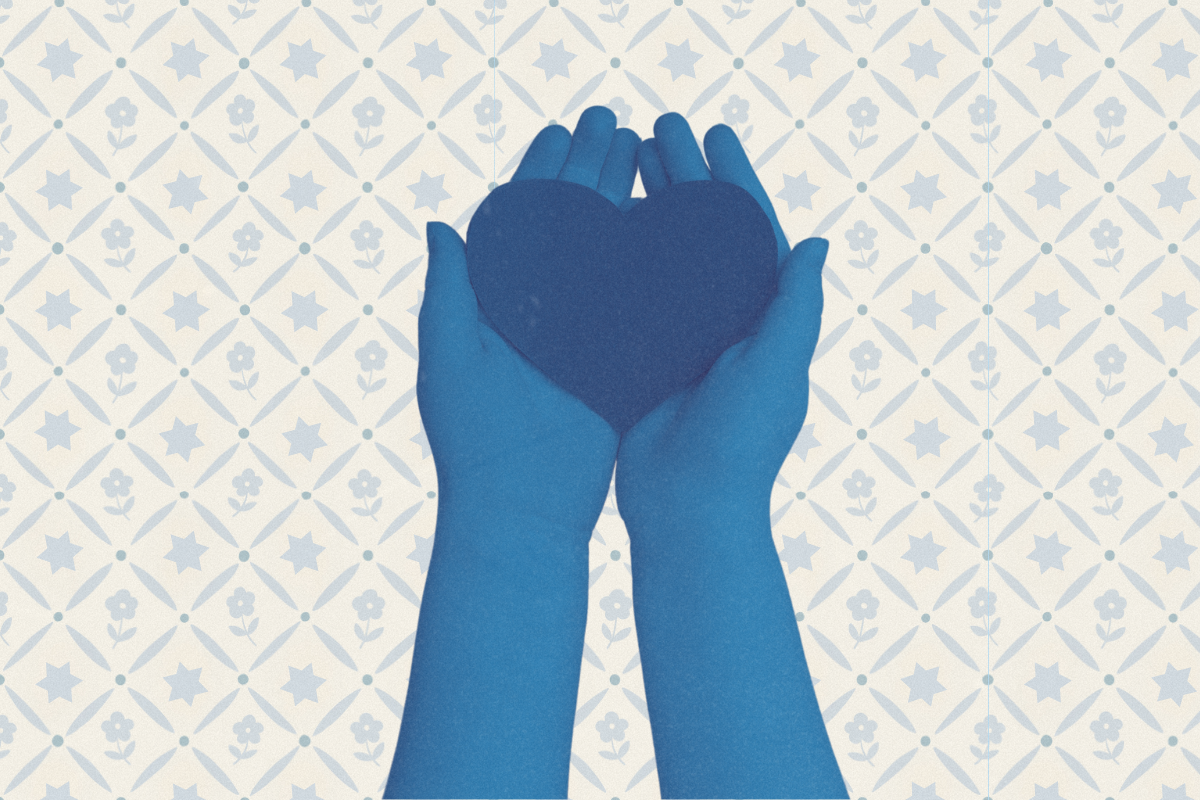As a mother of three children in elementary school, I want to make my home into a fortress of safety. I dream of barricading the doors, shuttering the windows, and cuddling beneath the blankets, my arms tightly wrapped around my kids. I’d like to shield them from all harm — including the pain of being an American Jew at the time of the deadliest attack on Jews in the history of this country.
But as a scholar who studies how American Jewish children understand and process the world around them, I know that’s not the right approach. In fact, when tragedy strikes is exactly the time when children most need loving adults to help them make sense of the senseless. After years of studying other people’s children, and practicing with my own children, here are four tips for speaking with your kids about the shooting at Tree of Life Synagogue in Pittsburgh.
1. Acknowledge the tragic reality
Many parents worry that talking to their kids about the rising tide of anti-Semitism or the specter of gun violence will shatter the beautiful innocence of childhood. Yet educational scholars have shown that learning about difficult current events only enhances children’s ability to cope with the world.
Especially as our kids are growing up in an age of easily accessible information, they are adept at stumbling upon or searching for the latest news. If your children are in elementary school, at any grade level, chances are very high they already have a sense that a terrible tragedy has befallen our community and our country, or that they’ll soon hear about it from other children or by overhearing adults.
My own kids’ experience provides an example of why parents need to be prepared to speak with their children. My eldest, age 11, came home from spending Saturday at a friend’s house already knowing many disturbing details about the Pittsburgh synagogue shooting, including the death toll. My 8-year-old, by contrast, had been home all day and hadn’t seen or heard the news. But he did have exposure to the shaken adults in our family, and by the afternoon, he turned to me and asked, “When are you going to tell me what’s going on?” Kids are savvy, and they are perceptive. Even when they don’t rely on adults to tell them what has happened, they do count on us to help them understand the troubling world in which we all live.
2. Respond to your child’s needs
Kids of different ages need different framing. Children as young as kindergarten know when the adults in their lives are upset or worried about current events; they rely on those adults to model how to talk about sad and difficult things.
By second grade, most children begin to piece together discrete bits of information from a variety of sources in their lives. Each overheard conversation or online excursion becomes a chance for them to find another piece of the puzzle they are trying to construct. Second and third graders desperately want to understand what’s happening in the world, and they need adults to help them see the bigger picture.
By fourth grade, many children are able to see current events, even tragic ones, as part of a larger political and historical framework. They, too, need adult guidance to understand the world around them, though they’re often more focused on the why than on understanding the who, what, and how of events like younger children.
Kindergarteners and first graders may be like the Passover child who doesn’t know to ask. To them, offer a basic frame, keeping in mind that if you don’t provide a narrative it is likely another child will. You may say something like, “it is a sad time for the Jewish people and the United States of America because many people were killed while attending synagogue.”
Second and third graders are likely to want to know specific information about what happened in Pittsburgh. Answer their questions as straightforwardly as possible, being conscious to offer only the details they request.
Children fourth grade and up will likely be searching for an answer to the question, why? An age-appropriate response is to remind children that there are no good reasons to commit murder, even you explain the Pittsburgh synagogue shooter’s anti-Semitic and anti-immigrant motivation.
3. Assure kids of their immediate safety, without making promises you can’t keep
As a mother, I want to be able to promise my children that I will be able to keep them safe, always and everywhere. But I know that’s a pledge beyond any parent’s control, and in the age of school lockdown drills, young children know it, too. Even so, children need to feel safe, and they often need reminders of the safety precautions that are already in place (or soon to be implemented) in order to protect them.
With my own children, I revisited the safety protocol at our synagogue, explaining why there are armed guards and regular emergency drills. I reminded them of a beloved and well-qualified community leader who chairs the safety committee, and the children themselves generated a list of other people whom they trust who are working to make the synagogues, schools, and other places they frequent as safe and secure as possible.
4. Keep talking
An initial conversation is necessary, but that’s just the beginning. In order for kids to process terrifying events, they need to know that they can talk with their trusted adults on an ongoing basis. Circle back to your children, asking them, “How are you feeling?” The goal is to leave them the choice of whether to pivot to another topic or revisit your earlier conversation.
When I did this with my own children, each had a response that exemplified his own personality and developmental stage. My 5-year-old hugged me tightly and said simply, “I’m sad and I’m OK.” My 8-year-old — always the biggest worrier in our house — admitted that he was concerned, but he’d realized that he was no more worried than any other day in a country persistently threatened with gun violence. My preteen had no desire to reopen the conversation at all, and he didn’t need to.
No parent wants to engage children in conversations about violence, hatred, and profound grief. Yet sometimes doing just that is what children most need to feel safe in a broken world. Unfortunately, this shattering week is one of those times. So, hold your children close — and keep talking.








